6 Ways to Improve & Develop your High Serve
What do you think are the critical parts to a Badminton High Serve?
It isn’t all about technique?
Have you considered that the way you prepare, the thoughts you have can create an effective high serve?
Many players serve without thinking about how to use it as a weapon
or they use a technique that can come apart when placed under pressure
If your singles high serve is already established, you may find something interesting in no. 5 and 6
These two points come under the heading of ‘Courtcraft’
Courtcraft skills are those where the player intentionally does something to affect the match or themselves. One day I hope to write a blog post called ‘How to improve your Courtcraft skills’. Look out for it or send me your ideas so I can get started.
These 6 points will hopefully give you some more things to think about than the points you normally find in a coaching manual.
Remember the serve alone will not win you the rally. Although, do you think it is possible to serve in such a way as to increase the chance that your opponent will make an error with their return stroke? Jump straight to point no. 6 to read more.
High Serving is far more than just starting a Rally
– – – – – – – – – – – – – – – – – –
1 It’s an aggressive serve
2 Technical aspects
3 When and How to start
4 How to practice
5 Create a Ritual
6 Think about increasing receiver tension
– – – – – – – – – – – – – – – –
1 It’s an aggressive serve
I would like you to think that the Singles High Serve is an aggressive serve.
Yes, I know it’s a lift and could be hit down by your opponent. However, at a younger age group, this service can be aggressive and give you an advantage. As you develop, its effectiveness will alter, but there are some elements that can give you an advantage.
When coaching it with younger players keep in mind that it’s a ‘power’ stroke. Sending the shuttle high UP into the rear court requires controlled power. The aggressive thoughts help with mental preparation (intention) and the production of power.
I’d prefer the player to start all rallies with a positive intent, ok, maybe you think that being ‘aggressive’ is taking it too far. I don’t. Ok, I don’t want players being too pumped, shouting or feeling out of control.
Starting the preparation with an intent to ‘win’ the rally and to send that shuttle ‘High’ is essential
Please don’t think that the High service a a ‘passive serve’. I’ve seen far too many of these. Flat and long with no intention to stress the opponents (see point 6) or to hit it high in order to keep it in.
Please keep your eyes open for service actions that send the shuttle flat’ish towards the back of the court. If serves are hit ‘out’ the back at crucial times then please check how the serving action compares to the information in the post below.
– – – – – – – – – – – – – – – –
2 Technical aspects
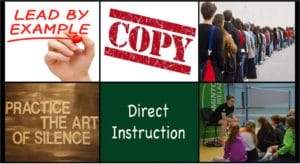 All coaching manuals will give you tips and advice on the High Serve. BWF Level 1 Coaching manual lists these technical aspects – Grip, Stance, Short Backswing, Body Bending Slightly forwards. I’m not sure I agree with all the points, but if you are selective as to when you coach them then they will apply at different times.
All coaching manuals will give you tips and advice on the High Serve. BWF Level 1 Coaching manual lists these technical aspects – Grip, Stance, Short Backswing, Body Bending Slightly forwards. I’m not sure I agree with all the points, but if you are selective as to when you coach them then they will apply at different times.
When I thought out how to phrase the tips below, I decided to give you an insight into the ones I use and have been taught. All of them are applicable at times but do not just repeat them all and expect development. Try to be selective and experiment to find which ones work best for that player in front of you.
Remember to coach and deliver them in different ways. Have you seen 6 Ways to coach the same thing
Full or Part stroke
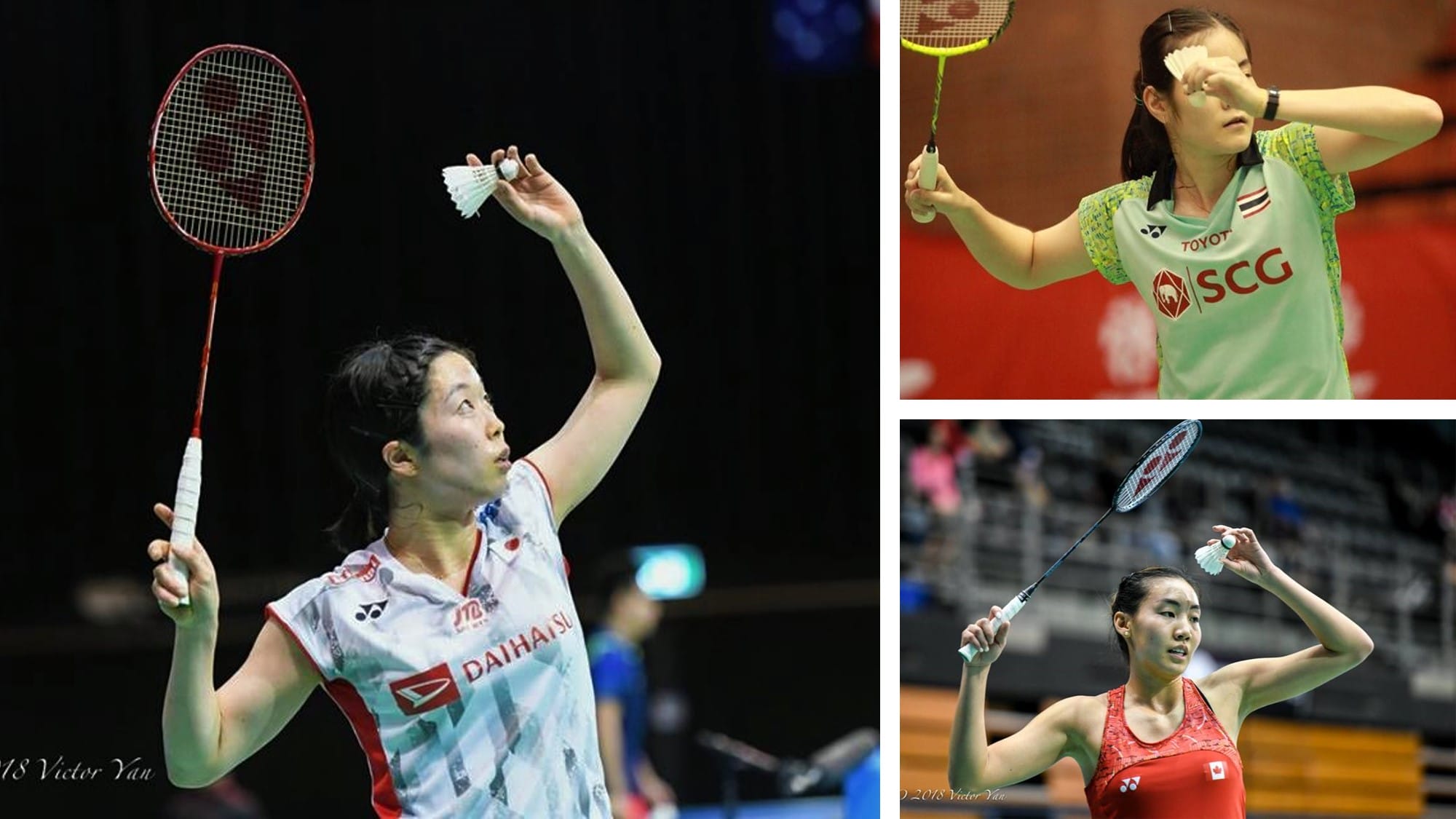 The critical point is: Do you want a High Serve played with a ‘part or full’ racket swing?
The critical point is: Do you want a High Serve played with a ‘part or full’ racket swing?
I’m not sure what you think about this statement. Do you think it matters? Are you aware that players use different hitting actions when High Serving, each has a different starting preparation position.
BWF recommend that players can start with a part racket swing, racket pointing down and backwards. They then suggest that the player progresses to a full swing as they develop.
I agree with this but worry that too many players stay with using the part swing and don’t progress to the full, more powerful action. Not only is the full stroke more powerful, but power can also be easier to achieve. The full swing also encourages the shuttle to go upwards but only if the follow-through is like that described below, with the arm over the shoulder.
I coach and encourage a full swing actions from a very early stage.
Click on this video to see how this 7 year old started and look out for
.. the ‘toe off the court’
.. the high starting racket position
.. the power (aggressive) action
.. the finishing racket position, the follow-through
Preparation
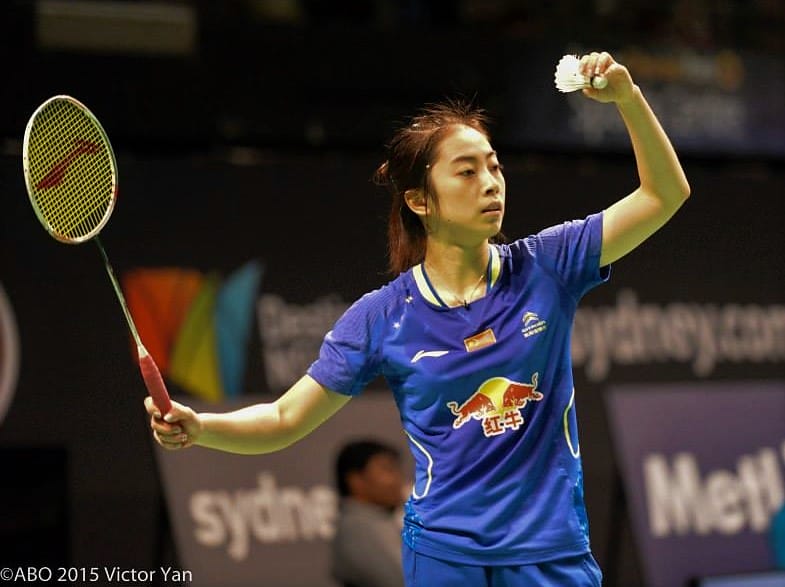 Take a look at the images above. These are the preparation positions I like. You don’t have to coach exactly the same style. Remember that eventually, the players will decide exactly how to prepare and what shape to start in. Point 5 is crucial in this respect.
Take a look at the images above. These are the preparation positions I like. You don’t have to coach exactly the same style. Remember that eventually, the players will decide exactly how to prepare and what shape to start in. Point 5 is crucial in this respect.
If after reading the tip above concerning ‘ Full or Part racket movement’ you decide to coach /play with a ‘part’ movement then the preparation will not look like the ones above. It may look more like the one on the right, or with a slightly lower racket starting position,
The critical point is: Do you want a High Serve played with a ‘part or full’ racket swing? Which preparation will you then use?
I prefer preparations similar to the ones shown below.

Whichever preparation you choose, remember is more about your thoughts, your intention, your readiness to serve and play the point.
Around the world
This advice was first given to me by Roger Mills (professional coach/mentor). It’s a way of describing how your two arms move during the stroke. Stand up now and imagine doing a FULL High Serve action. Be aware that if your start preparation isn’t like the pictures and advice above, then this advice won’t work.
Imagine moving both arms at the same time so that you draw a large circle with them (“as if to draw the World”).
Doing this will encourage the start of a Power stroke and help with positioning the shuttle slightly ‘out in front of you, and to the side a little’. There are a variety of ways to place the shuttle but most involve a small toss forwards & upwards or a ‘letting go’ whilst the arm moves upwards.
Try with your players. Or, next time you see me, stop me and ask me to show you. It doesn’t matter where I am, I will stop and help.
Crescendo
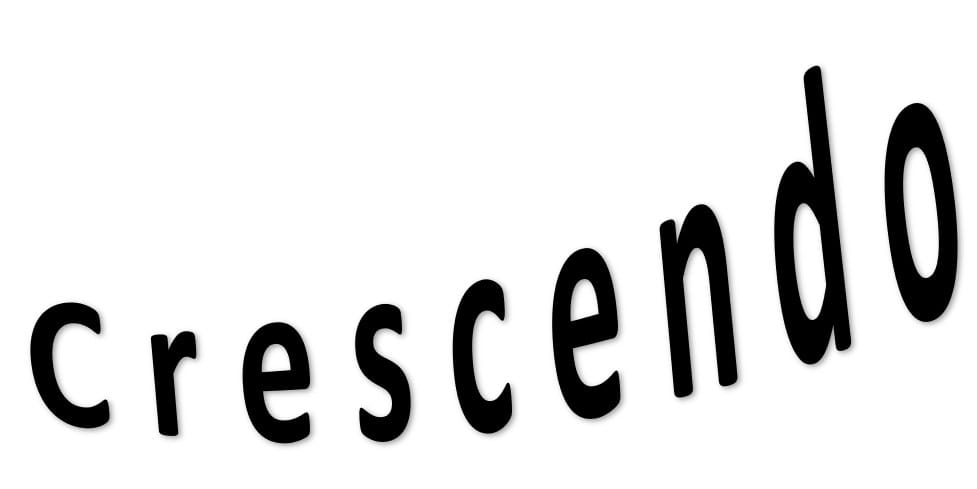 An easy one. The google definition (verb) is “Gradually increase in loudness or intensity.
An easy one. The google definition (verb) is “Gradually increase in loudness or intensity.
If the players understand this musical term then you go ahead and try asking them to imagine hitting with power using the thought of ending in a ‘Crescendo’.
All it means is that the stroke starts slowly but rapidly increases in power towards the end. It’s this increase that is very important. Too many players hit the High Serve slowly with no rapid increase that will help gain height and depth.
If you see me at the All England in March find me outside the hall and come and have a coffee (on me) while you explain if this worked for you.
 Toe up
Toe up
As part of the preparation stance, why not try encouraging players to lift their front toe off the court during the initial preparation. This helps bend the back leg ready for the full powerful serve action.
Coach players to incorporate the toe off the court, a sideways stance and racket preparation, all within their serving ritual. Jump to no.5 now to read more.
I think this is a great coaching cue and one that delivers successes as well as preventing some possible technical errors. Try it next time you are coaching a young player during the early stages of developing their High Serve.
Arm over shoulder
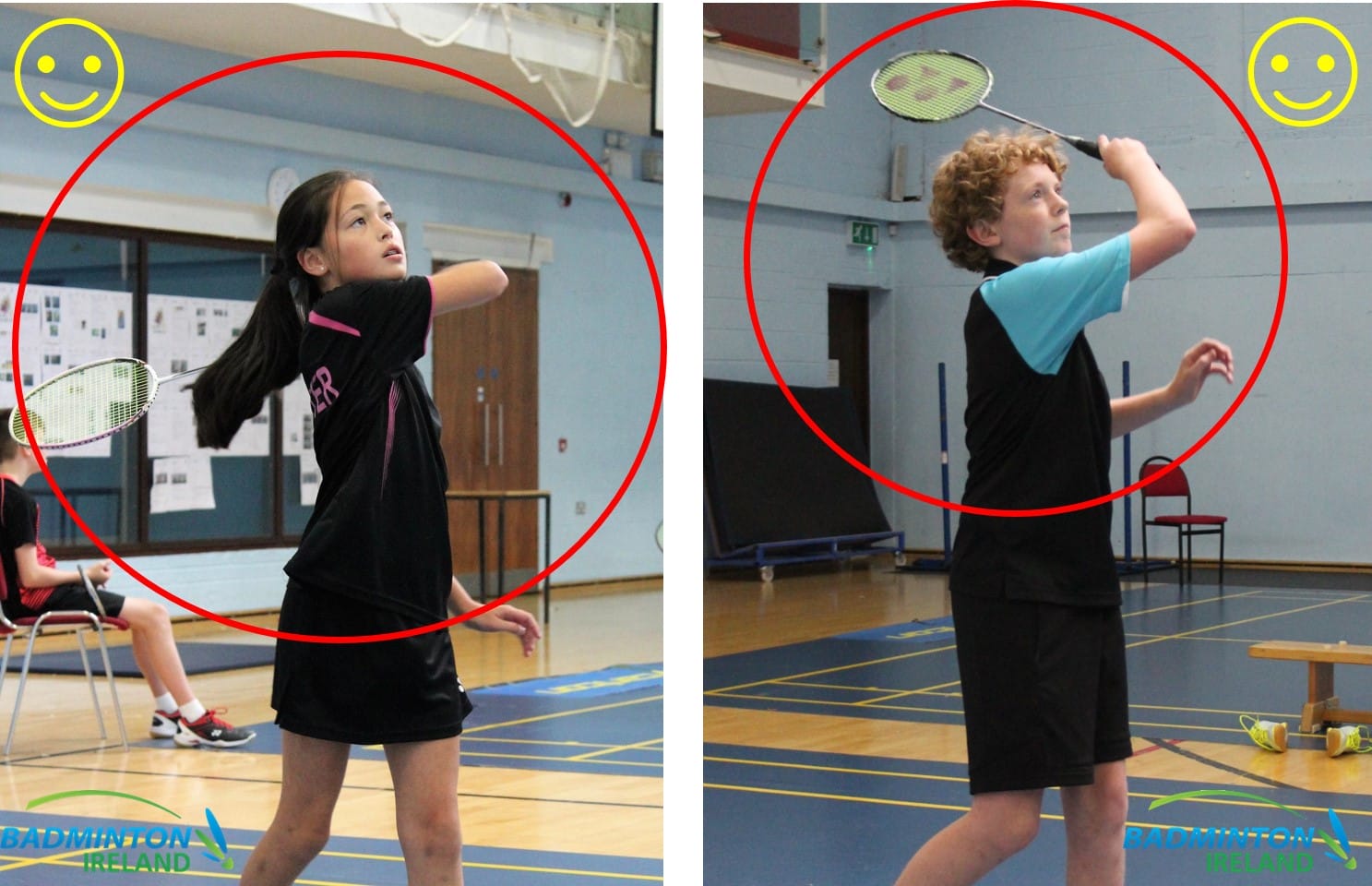 I recommend that the racket should finish the stroke by pointing over the player’s non-racket shoulder (left shoulder for right-handed players). I’ve seen lots of players finish their stroke with the racket still pointing forwards after striking. Or, worse still, with their racket pointing upwards on their racket side so that they could look into their hand.
I recommend that the racket should finish the stroke by pointing over the player’s non-racket shoulder (left shoulder for right-handed players). I’ve seen lots of players finish their stroke with the racket still pointing forwards after striking. Or, worse still, with their racket pointing upwards on their racket side so that they could look into their hand.
Asking or showing players to finish over their shoulder will allow for a smoother more powerful, yet controllable, stroke.
Sometimes I emphasise that at the end of the stroke you could try and look past your arm towards the opponent. Get up now if you are reading this and try to replicate this finishing position. Can you ‘look past your arm’ and see the other court?
Have you seen players finishing the stroke with these two racket positions?
– Racket under their armpit. Players with this follow through often serve flat and long, rather than HIGH.
– Racket pointing upwards but to the racket side of their body. Players with this follow through could serve high but have difficulty in serving from the righthand court (if they are right-handers)
Say “Up”
This final point is all about encouraging yourself to hit a powerful stroke but in a different way. If you trust in the power of Words, then try this. In practice, just prior to serving, pause, say “UP” out loud, then hit the shuttle.
What happens? I’ve used this with many junior, developing players. The result is often that the serve travels higher without necessarily going longer. During matches there is no need to always say the word out loud, you can if you want. Some players like to remind themselves with their inner voice. I think its a great idea if you include this as part of your serving ritual. Please try this and let me know what you find.
Go and visit Badminton Family for more advice
This is a very interesting YouTube channel hosted by Thomas Laybourn, Rasmus Tran and Phillip Orbak.
Thomas Laybourn is a former Danish professional player with many titles and a full-time professional coach. : World Champion, 2 x European Champion. Rasmus Tran is a professional Danish badminton coach
– – – – – – – – – – – – – – – –
3 When and How to start
I believe that players should start High Serving as soon as they play matches.
The service doesn’t have to be extremely high, just high over the opponents and landing in the centre of the rear tramlines.
Some coaches and manuals advise that players use the low serve, even the backhand low serve. I wonder if this is because the trend in Coaching Manuals at this time is to teach the Backhand Low serve first, then the Forehand Low & Flick, then the high Serve.
What do you coach or advise? How do your players serve in singles matches if they are beginners and developing players?
Young Players serving with a Backhand
Do you see any problems if players use a Backhand low serve when they first play singles?
If you were 9-12 yrs old and someone low served to you what would you think? Would you be excited to try and exploit this situation to your advantage?
I hope you would flick deep past them, especially if they served slightly wide. I’m sure you could put them in all sorts of trouble. That is IF you had practised returning low serves or flicking from just beyond the service line.
Please don’t advise the use of Backhand low serves (even forehand low serves) before the player can move backwards quickly to both sides and be able to return from the deep/rear court.
If you have thoughts about this please let me know.
– – – – – – – – – – – – – – – –
4 How to practice
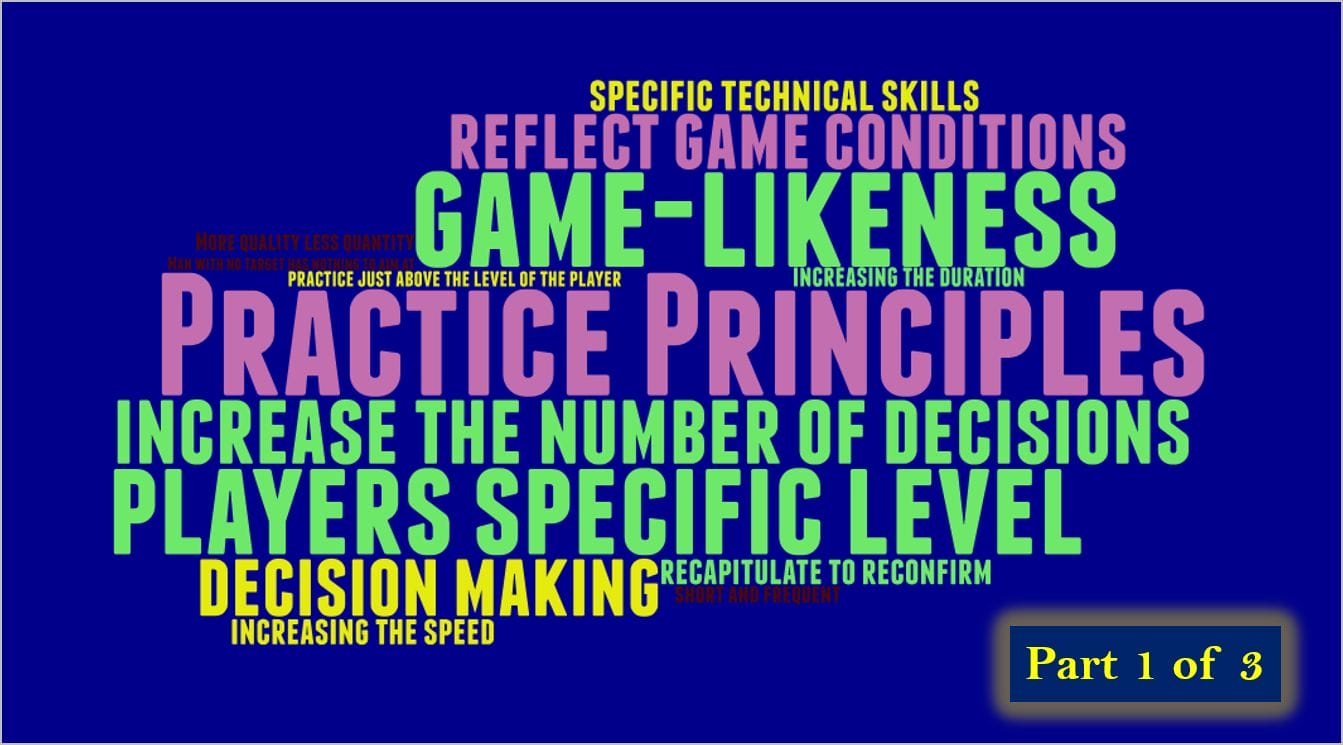 Lots of coaches have told me that High Serving practice is boring and not motivational. What do you think?
Lots of coaches have told me that High Serving practice is boring and not motivational. What do you think?
If they mean standing still and hitting 30 shuttles towards the backline then I would agree with them.
If there was a target to aim for then maybe I could start to get interested. However, there are ways to practice the serve with lots of repetition yet still be motivated, challenged and hopefully improve. Before we talk about these ideas have you read point no. 7 in this post opposite … Read about it here
Here are 3 ways to practice high serving. The choice depends on your experience, the reason why you are practising and what challenges you would like. It’s up to you to decide which to use and how to amend or change the practice to suit you and your players.
Against the wall
This is a great way to encourage very young players to practice High Serves in a controllable, repetitive, yet challenging way. Take up a position about 2.5m / 8 feet from the wall. Prepare for a High Serve, remembering using your ritual (see point no.5), then hit it UP.
The aim is to see if the shuttle travels high over your head and lands on your backhand side. You should be able to catch it without moving far as you should have lots of time to move. Work with your players to create practice situations that create a competition (with self or others). You could use numbers or examine how far you have to move to catch the shuttle. Remember always to encourage and reward players who use a Ritual.
If it bounces back off the wall and hits you, then there is something wrong with your technique!
Fun games: make it interesting and competitive
Here are a few very quick ideas for players to try when first starting out High Serving. I have outlined the general idea, it’s up to you to add extras and explain to the group.
 in pairs, each player has 10 shuttles to hit high over the opponent to try and see how many shuttles land in the back serving lines.
in pairs, each player has 10 shuttles to hit high over the opponent to try and see how many shuttles land in the back serving lines.- individually, each player aims to serve between two targets positioned 1m apart in the middle of the rear tramlines. What is your score out of 10 shuttles?
- in pairs, one player high serves, the other stands in the centre of the rear trams, 3 points if they can ‘head’ the shuttle, 2 pts if they reach out to catch, 1 pt if they need to single step to catch. It’s the first pair to 12 points.
- in pairs as point 3 but the catching player holds an empty shuttle tube and tries to catch the shuttle inside the tube.
- in pairs, one player high serves, the other starts as if to receive, then moves back catching with both feet inside the rear trams only. The first pair to 6 catches.
- individually, who can count to “4 or 5 Elephants” before the shuttle lands, hit it high and count.

Conditioned Games
I think the best way to practice High Serving is within games, using different Conditioned Games.
The benefit of hitting 30 High Serves at the start of every session isn’t great in terms of what happens when you need to serve in at say 18-17 in the 3rd game.
It also allows for and encourages the use of your serving Ritual.
If you want to read more about using Conditioned Games click on the image.
There are 2 games for you to try
It’s vital that players learn to control the power of this service when their emotions are high
Game 1: High Serve only
.. To develop a ‘thinking’ (mental) approach to serving and also receiving serve
.. To encourage & develop the use of rituals as part of the preparation to serve
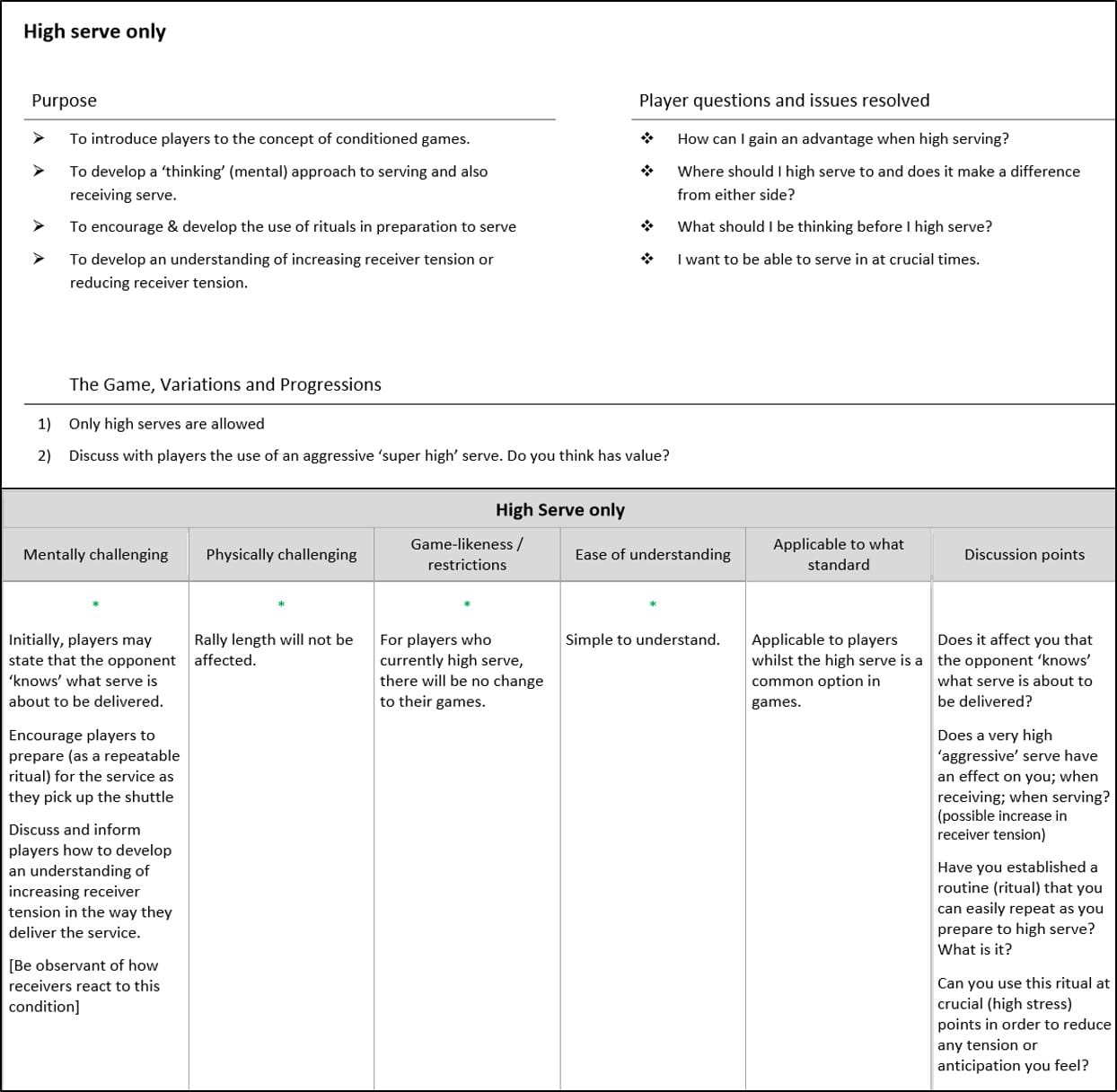
.. To develop an understanding of increasing receiver tension or reducing receiver tension
Player questions and issues resolved
.. How can I gain an advantage when high serving?
.. What should I be thinking before I high serve?
.. I want to be able to serve into the court at crucial times.
Game 2: Safe replies to High Serves
.. To encourage the use of a ‘safer’ reply to a high serve
.. To develop confidence in known replies to high serve
.. To develop the understanding of ‘critical receiving situations’
.. To develop the use of ritualistic (controlled) thinking at high-stress moments
Player questions and issues resolved
.. How can I find a safe return of high serve to play at crucial times in a match?
.. How can I reduce the amount of return of serve errors I make?
.. What should I be thinking before I receive serve?
.. I sometimes change my mind whilst the high serve is in the air before I hit it and then play returns that aren’t effective
– – – – – – – – – – – – – – – –
5 Create a ritual
 Remember in nearly all occasions you will have won the previous rally so start your ritual off with a positive thought. Even if you are losing, I see no reason not to start the next rally with a positive intent.
Remember in nearly all occasions you will have won the previous rally so start your ritual off with a positive thought. Even if you are losing, I see no reason not to start the next rally with a positive intent.
As I suggested above the reason for the ritual is to prepare YOU in a way that makes YOU FEEL COMFORTABLE and READY to play. For this reason, it has to be your ritual, created, trusted and practised by you.
Find a routine, a sequence of things you do every time. The number of steps can be low or high, it depends on you. The time taken will also vary. Be careful not to take too long and upset the umpire. However, if it’s very fast then it may not have the effect you desire.
I recommend that the sequence starts either as the previous rally ends or as you pick up the shuttle.
It must be repeatable. This is very important. Too many steps or complex sequences of movements may not work or be difficult to remember. Does it contain a positive thought or some type of self-talk?
You may decide to reduce the number of steps. If you do, always include a positive thought or section that you associate with a positive intent.
Go and find a YouTube video of Carolina Marin and see if you can spot her ‘talking’ to herself. Also, watch clips of Viktor Axelson, he has a very good example of a ritual that involves a few definable steps.
Look out for a future post about Low Serving in Singles. I will include much more information about creating and using your Preparation Ritual in that post.
– – – – – – – – – – – – – – – –
6 Think about increasing receiver tension
Have you thought that you could affect your opponent by the way you preapre and deliver your High Serve?
It certainly is possible. Lots of players have the capability to upset themselves (inside their head) if you create the right situation or use the conditions to help you. This is not cheating in any way. I am not talking about upsetting them with words or looks.
It’s about creating the conditions that allow the receiver to make an incorrect choice or feel emotional: “increasing Receiver Tension”. It’s this emotion that can affect their decision making or their ability to play the next shot with accuracy and effective technique.
After talking with many players and coaches they often say that the following things upset them when receiving a High Serve.
Do you recognise any of these and do they cause you upset or maybe you’ve seen the effect on your opponents.
Very High Serve – Hit high into the roof as this type of service can give your opponent a little more time to “talk” to themselves and maybe change their mind over their next shot. Please don’t underestimate the influence a Very High Serve has on your opponent.
Drift – Some halls have ‘windy’ conditions often caused by air conditioning or drafts from ventilation. Make use of these if you know that they are there. Serve high so that the shuttle does not fall vertically, but drifts slightly as it falls. The higher you strike it the more change that the drift will take effect. It’s not always easy to hit a drifting shuttle. I’ve seen many players have trouble both technically and mentally controlling drift when receiving a high serve.
Lights – Have you ever thought about deliberately serving into the light above the court. Often there are lights over part of the court and you could decide if you wanted to, to serve into them. Your opponent will have to adjust as the shuttle disappears for a moment into and out of the light.
Your Ritual or Action – Having a long or different ritual could also increase the Receiver Tension. It’s your ritual, but strangely it can affect your opponent.
Please Remember that not all these things above will increase the Receiver Tension in every opponent you face. However, some will, and you should be aware of this throughout the match.
Observations and thoughts
Next time you watch a tournament, especially a junior event, try looking for the following points.
Each one has been described above but now it’s up to you to observe them and work out what intervention to use.
- Preparation – players who walk straight to the service starting position and serve i.e. no ritual pick up and preparation see 2 above
- Starting position – racket pointing backwards and downwards, not preparing as number 2 above. Do they then deliver a medium, possibly flat high serve?
- Low or Flat High Serves – Their High serve travels flat not high. Often landing out the back of the court. They don’t make use of an aggressive high serve.
- Racket ending position (follow through) – The incorrect technique is finishing under the armpit or up and to the racket side. The follow through for a powerful aggressive High Serve should be over the non-racket shoulder.
- Serving without thought – almost rushing between points and not using the time to prepare for the next rally, see all points above
– – – – – – – – – – – – – – – – – – – – – – – – – – – – – – – – – –
Is there anything that you’ve read that has helped or you disagree with then please send me an email.
I’d love to hear your views contact@badmintonandy.com
For fun only !! Thanks for reading this far 😉
Take a look at a legend called “Pete Stokes “. His technique is great apart from maybe his last serve 🙂



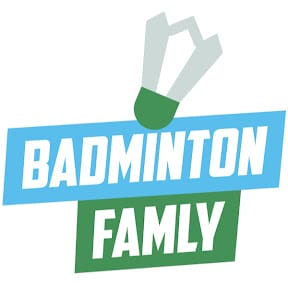

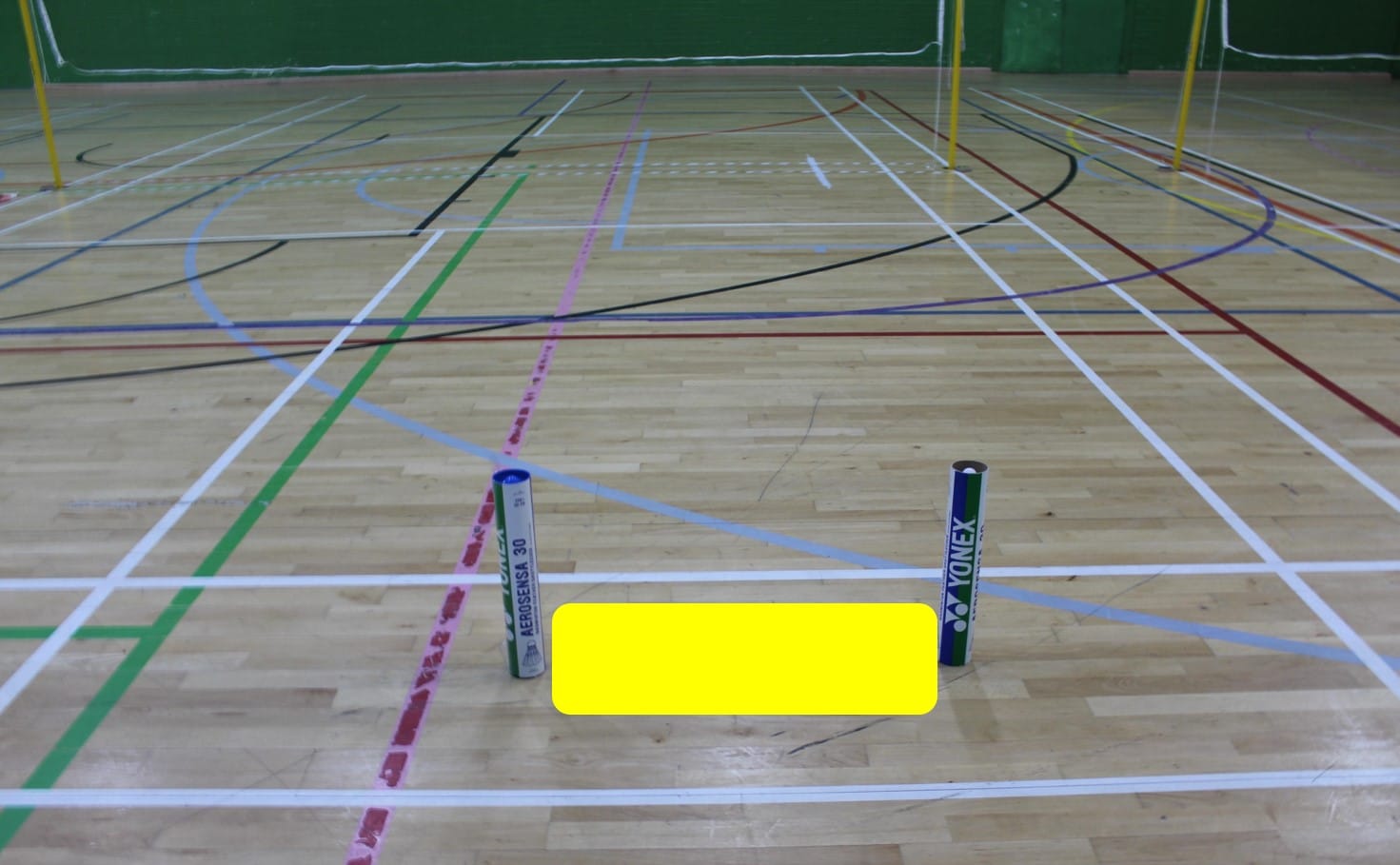 in pairs, each player has 10 shuttles to hit high over the opponent to try and see how many shuttles land in the back serving lines.
in pairs, each player has 10 shuttles to hit high over the opponent to try and see how many shuttles land in the back serving lines.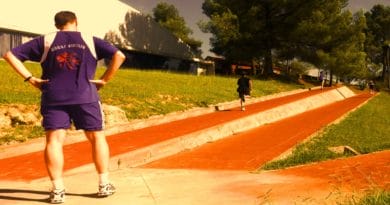
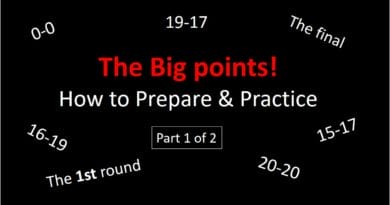
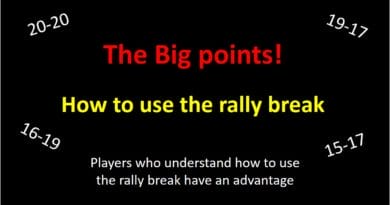
Tonight I had a range of age groups to try this on. Again, at the moment I don’t want to deconstruct serves for kids who are nearing the end of leagues but will over the quieter time. However, I got a chance to work with some brand new kids 8, 9 and 10 year olds. The toe up, finishing with racket over their shoulder etc, worked brilliantly. They were able to serve more consistently very quickly. Their hips naturally went into a relaxed position without me having to break it all down. Lots of kids these days have very poor hand eye coordination and practising this serve without shuttles and then with shuttles I found serves were more successful much quicker. By successful I mean rackets connected with shuttles 85 – 90% of the time, which is huge. Looking forward to trying it out with 15 and 17s over the summer and see how it works out.